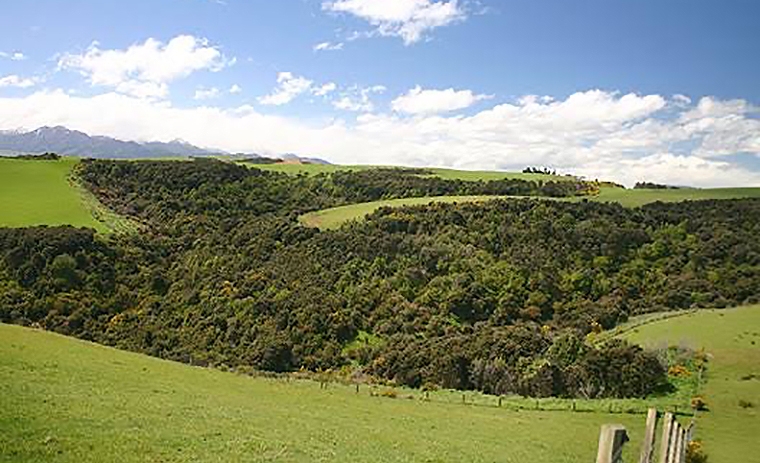
For quite some time organisations like Beef+Lamb have been raising concerns around afforestation and the ETS, and the negative impacts monoculture forests and indeed carbon farming will have on not only the primary industry and rural communities but there are wider environment. This is why it is so important ETS settings are reviewed and changed to put a brake on a run away forestry industry and the looming crisis that will ensue.
Over the next 2 episodes I am chatting with Rob Morrison of Pure Advantage which supports a broad range of sustainability, regenerative and green growth-focused research activities. Their goal is cutting-edge theory and practice to transform how New Zealanders understand and manage the relationship between the environment and the economy.
I asked him whether the current ETS settings are working in New Zealand?
“Well, the ETS is not currently fit for purpose, so I think that's it's abundantly clear. And what we're now seeing because it's not fit for purpose, and because of the policy settings around the ETS we're seeing a misallocation of capital pretty much across the country, and it's an accelerating misallocation of capital. And we're seeing that base of land conversion, people, landowners, international investors, iwi, chasing carbon credits and then it's a euphemism but chasing the so called carbon farming. And it is what we're ultimately going to see in the long term really devastating, I think socio economic impacts particularly in rural areas, but also massive by biodiversity impacts. So yeah, the ETS in simple terms is not fit for purpose.”
Why are we not incentivising and planting and regeneration of native vegetation, surely this has a more environmental benefit long term than exotics?
“Yeah absolutely. So I think we're a little bit caught ransom by the forestry industry. So clearly there’s been a lot of investment in forestry and we've seen significant plantings and those plantings are accelerating. If you look at the land use change in terms of forestry post 1989, there's roughly 400,000 hectares of forestry and something like 90/10, 90 into exotics and 10% into indigenous forests, so it's heavily overweighted. And the root cause of the problem is that the lookup tables in the ETS are all weighted to Pinus Radiata.”
“I think if you look at the ETS lookup table, there's only one lookup table for native trees, and that's based on regenerating Kanuka or Manuka, so if you're sitting there with a block of land and you go, Hey, I think I might go plant some trees here, you go to the ETS you look at the lookup tables and it's all about Pinus Radiata. And then you look at the one lookup table for native trees and that's for Manuka and Kanuka, regenerated Manuka and Kanuka at about five or six tonnes of carbon sequestration per annum and then you go well that's not great, because this Pinus Radiata is generating 20 or 30. So you go I can make much more money if I do that. So we've got this completely skewed regulatory framework, that is encouraging the planting of Pinus Radiata.”
“A lot of people who are in pine argue that it's more expensive to plant natives and so on, and who also argue wrongly that native trees don't sequester the same amount of carbon. So what we've had is a forestry industry that's been completely weighted towards plantation forestry, the research has all gone into plantation forestry, the developments gone to the plantation forestry, the genetic science has gone into that. And we really haven't looked at our native forests and said, what are we doing here? Why aren't we investing that sort of money into our native forests, and that just hasn't happened. And really, the leadership out of The MFE and out of a number of governments has been incredibly poor on this issue. I think sheep and beef (Beef+Lamb), Landcare Research they estimate around 1.2 hectares is of regenerating, you know scrub land in the country. Well, if you put the same amount of effort into looking at that as potential carbon sequestration sinks versus Pinus Radiata, we'd be having a completely different conversation about forestry in this country."
New Zealand’s primary industry needs a high level strategy which includes GVT, industry and farmers to ensure NZs image and our reality is a sustainable farming future, this needs to be captivated. This includes native vegetation on farms sequestering carbon, it includes increased biodiversity, it is a mixed farming model which does include pine trees, but it should not include the endless expansion of monoculture exotic forests. Nor should we allow big industry emitters to dump their pollution on good productive farm land through the ETS in the current manor that they are, large scale afforestation is short sighted and will not serve this country well in the long run.
New Zealand’s story should be one of sustainable food production which supports and enhances our natural environment, we now live in a world where the market is increasingly demanding sustainably sourced food and traceability, so we need to be driving this change in the right manor, we need to be keeping pace and exceeding market expectations.
This will in the long run allow us to command a premium for our products and farmers will be able to reap what they have sown and benefit, with increased farm gate returns for their efforts.
Listen to the podcast to hear the full story
Log Prices
Select chart tabs
Angus Kebbell is the Producer at Tailwind Media. You can contact him here.
17 Comments
Get planting chaps - India needs your lucrative virtue signal.
"India plans to expand its coal power fleet by about a quarter through the end of the decade as it continues to lean on the fuel to meet growing demand until energy storage costs fall.
The world’s third-biggest emitter of greenhouse gases will add nearly 56 gigawatts of coal power capacity unless there’s a substantial drop in the cost of storing electricity, Power Minister Raj Kumar Singh said in an interview this week in New Delhi."
https://www.bloomberg.com/news/articles/2022-09-23/india-may-boost-coal…
They also plan to double their milk production. Their highly protected dairy industry is the largest and one of the most inefficient (from a carbon emissions perspective) in the world, it will put a huge pulse of increased methane into the atmosphere.
... herd on the radio that cows in India average a mere 2 to 4 litres of milk per day ... compared to 20 litres plus for Kiwi cows ...
Yet ... animal for animal , each Indiam cow produces as much methane as its Kiwi equivalent ...
They produce a bit less per head because they don't get fed well, but certainly not enough to compensate for the low production.
The lookup tables are only if your forest is less than 100 ha. Larger forests use the field measurement approach so you claim as much as your forest is actually growing, regardless of species. The 100 ha restriction seems pretty arbitrary to me, you can cost-effectively measure anything over 5 ha.
That’s true - 100 ha made some kind of sense with carbon price down around $15, but at $85 there is now a better payoff from installing plots EXCEPT that the indigenous lookup table is overly generous for the sort of marginal land being retired into indigenous forest, so many owners are choosing to only register 99 ha so they can claim the over-estimated sequestration from the lookup table. (Pure Advantage know this, so not sure why they're still refusing to acknowledge it here). Also the cost to government of processing and auditing claims on 5 ha blocks is high compared with their contribution to NZ’s net emission targets – it's more cost effective for government to concentrate efforts on the larger areas, rather than creating hundreds of boutique lookup tables to cover every possible situation.
Have you any proof the indigenous tables are too generous? Many ar arguing they are not covering any kind of managed native plantings.
Meh, can't get excited I'm afraid.
NZ, and the rest of the world for that matter need to revert to a groundcover status that was more typical of 200 or more years ago, before man came in and torched the trees and drained the swamps, all so that he could graze some methane belching livestock.
Until the time comes that we have a viable carbon capture and storage technology we are almost entirely dependant on trees to reverse our damage.
We want to go back to 500,000 ha of evil methane belching swamps. Our farmers were visionary climate heroes draining those swamps. Did it all without any filthy carbon lucre either.
As I understand, it is drained swamps that are the bigger methane belchers, and reverting them back to swamps will turn them back into carbon sinks.
The livestock produce the methane not the paddock. Rice paddies are huge methane emitters but we don't castigate rice farmers for some reason.
Pretty hard sell getting people to live like we did 200+ years ago with a global population to match.
Exactly right. To a hammer, everything looks like a nail. The forestry industry are busy knocking in the nails on the coffin lid of economic value measured biodiversity for another few generations.
A properly managed exotic forest can have a lot of measurable biodiversity. Certainly more than monocultural pasture and sometimes more than unmanaged native.
The ETS is doing what it was designed to do make polluters line the pockets of investors. It's a circular economy. Is it going to help reduce the effects of climate change? Covid policy did more to reduce pollution then the ETS. Will future generations thank us or condemn us for not taking action?
Future generations will laugh at at our ludicrous climate homeopathy attempts and wonder why we didn't learn from Lysenkoism.
Leadership has been poor because governments and regional councils have to go with the ideology that the people support. The people support ideology if they are not informed by facts. Where do they get this ideology? Paid scientists, researchers etc in the Ministries and regional councils should have an obligation to us all to provide real information so we can make informed choices, instead of having to listen to biased thinking and thoughtless politicians building empires of one sort of another.
Instead we pour money into poor actions instead of helpful actions. We should get rid of the ETS and tax everyone with a carbon tax and oblige the fossil fuel emitters to tidy up their act under regulation. They have made a mint over the years , now they can pay society and the planet back.

We welcome your comments below. If you are not already registered, please register to comment
Remember we welcome robust, respectful and insightful debate. We don't welcome abusive or defamatory comments and will de-register those repeatedly making such comments. Our current comment policy is here.